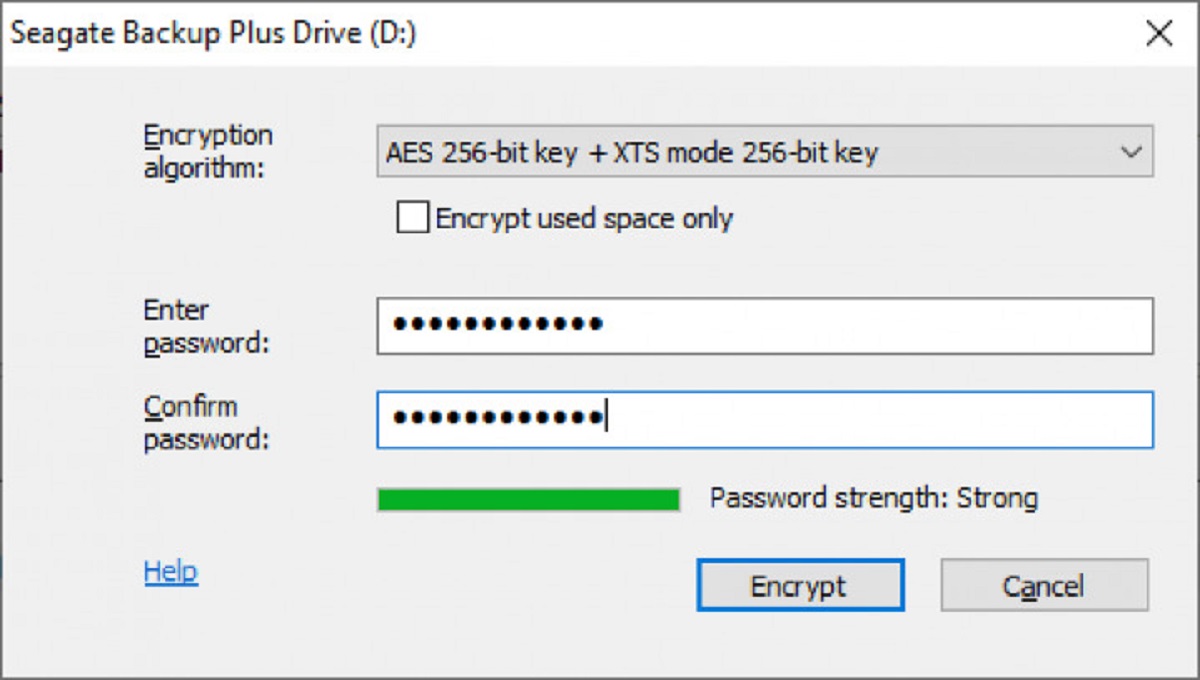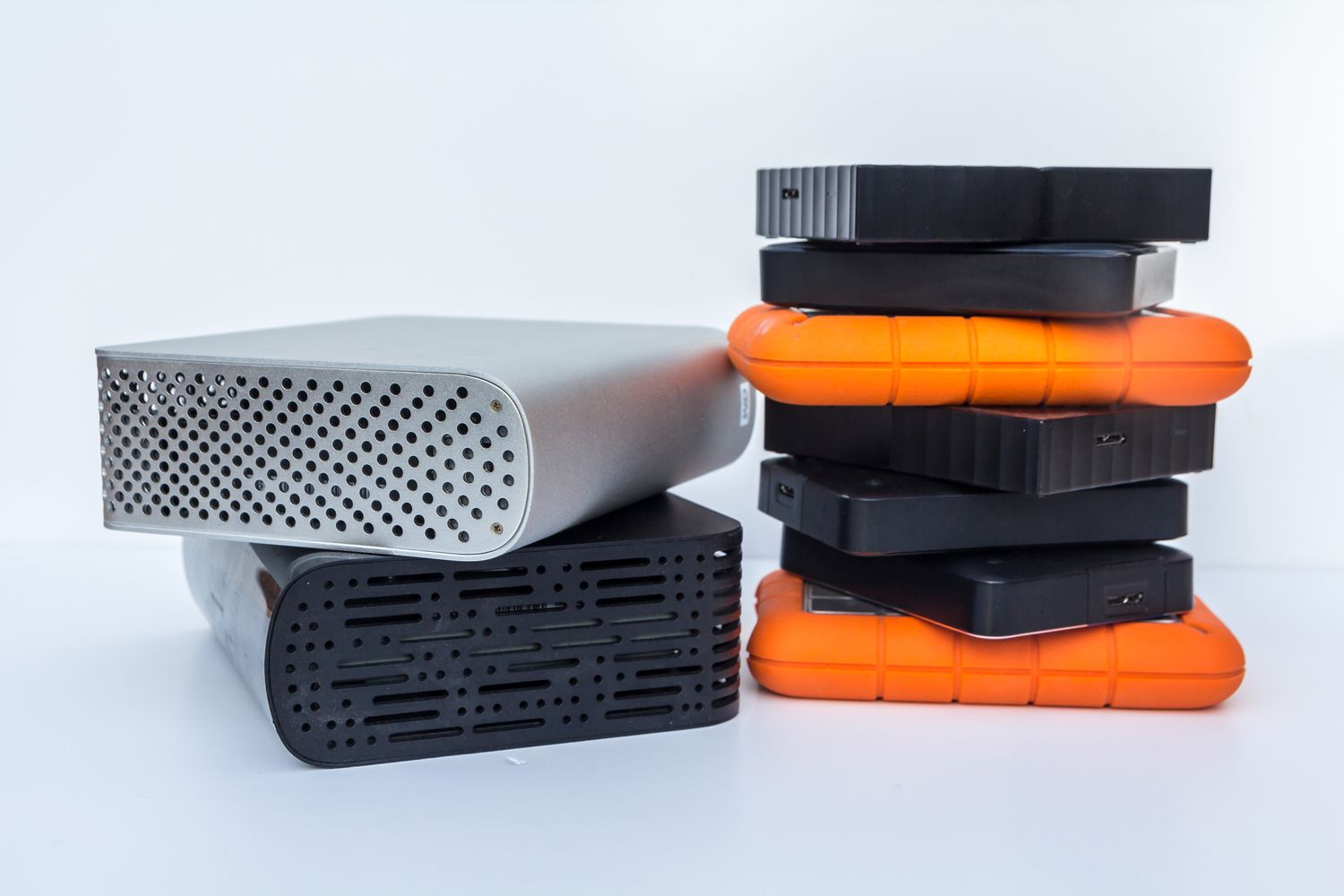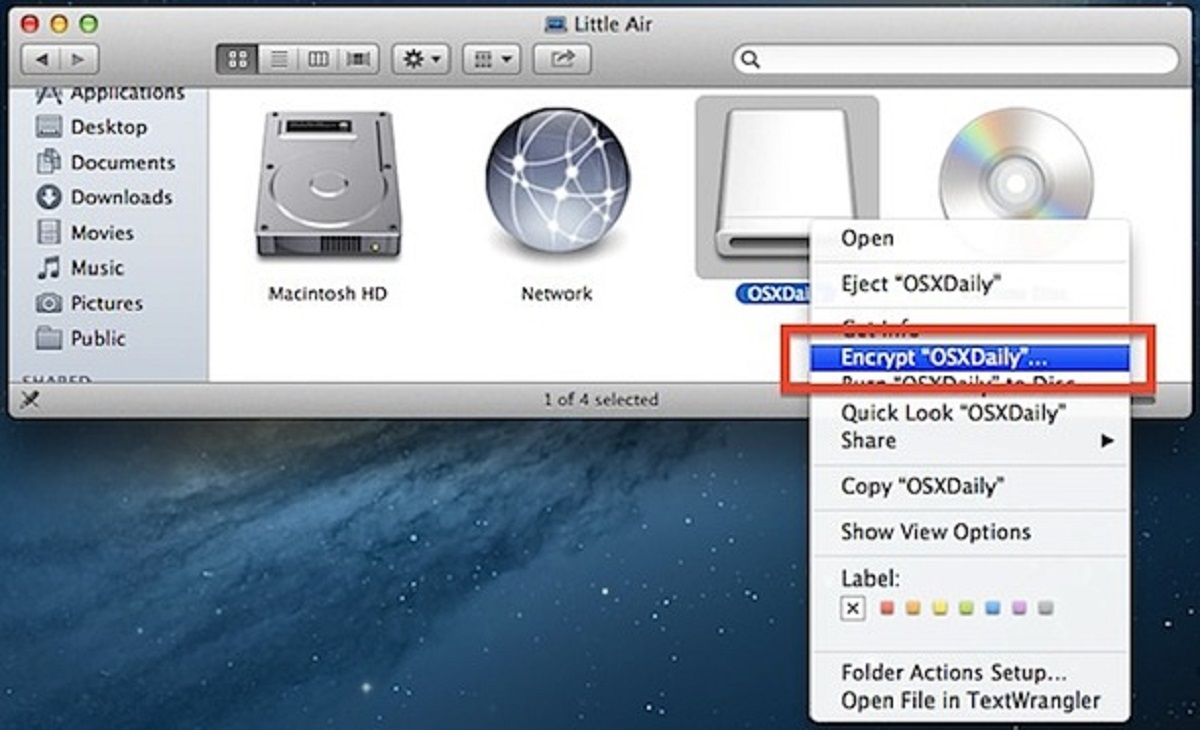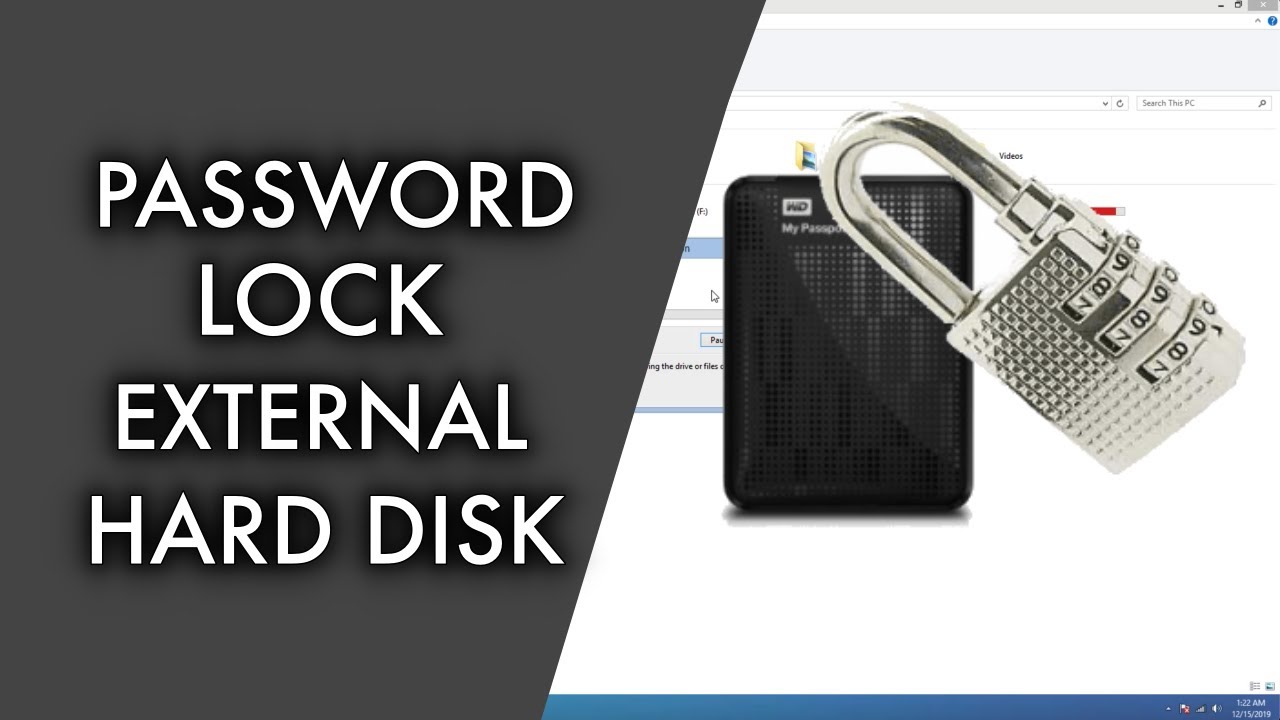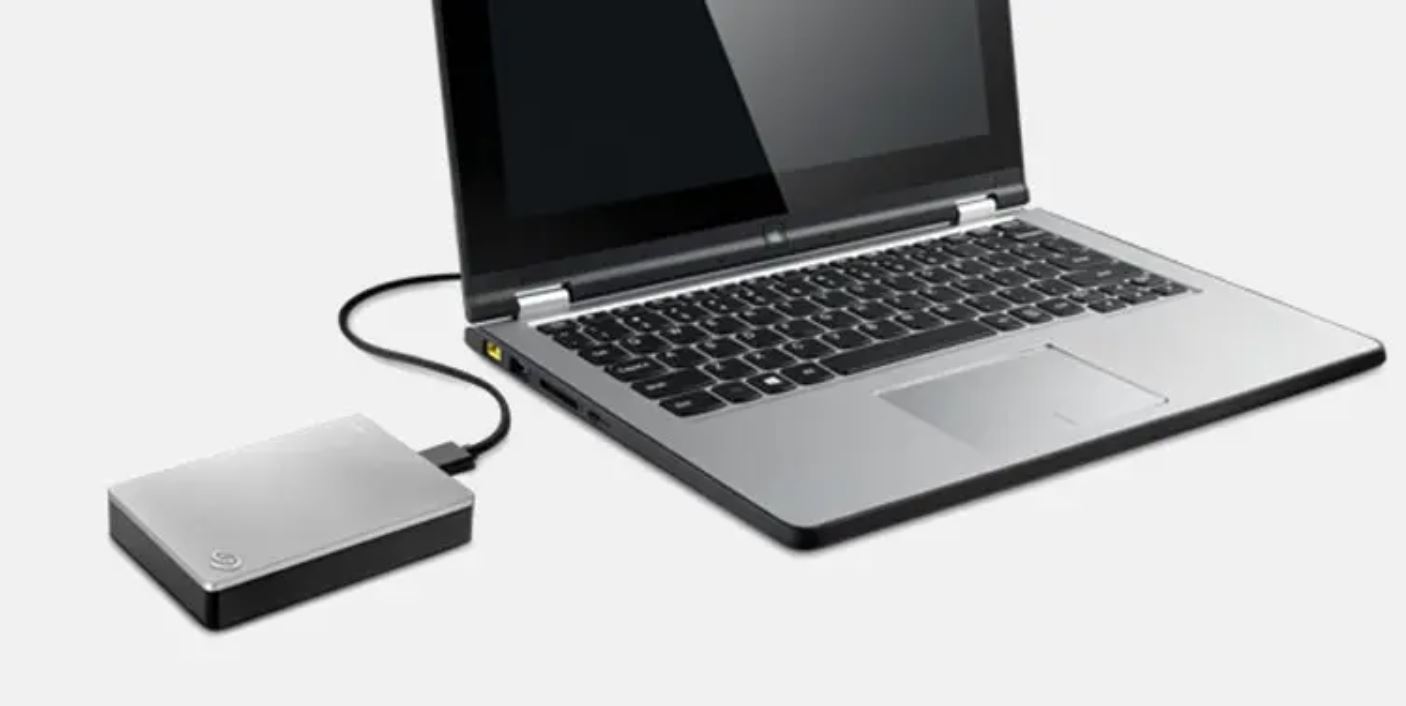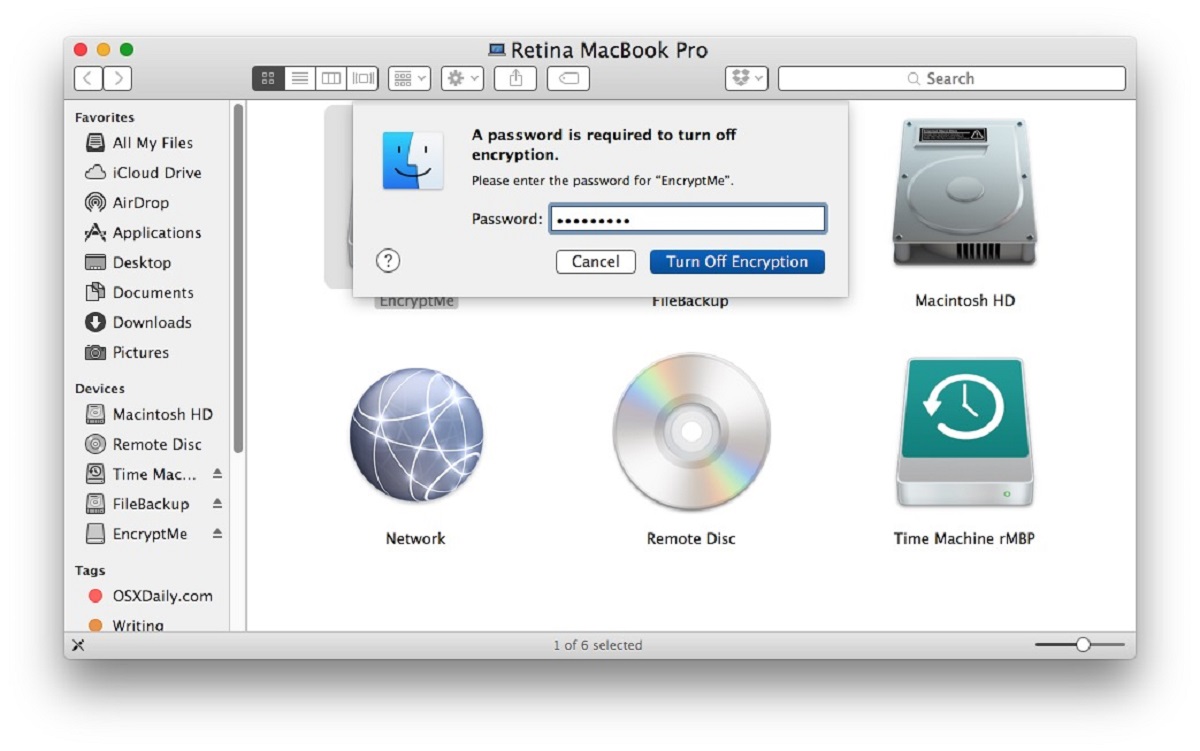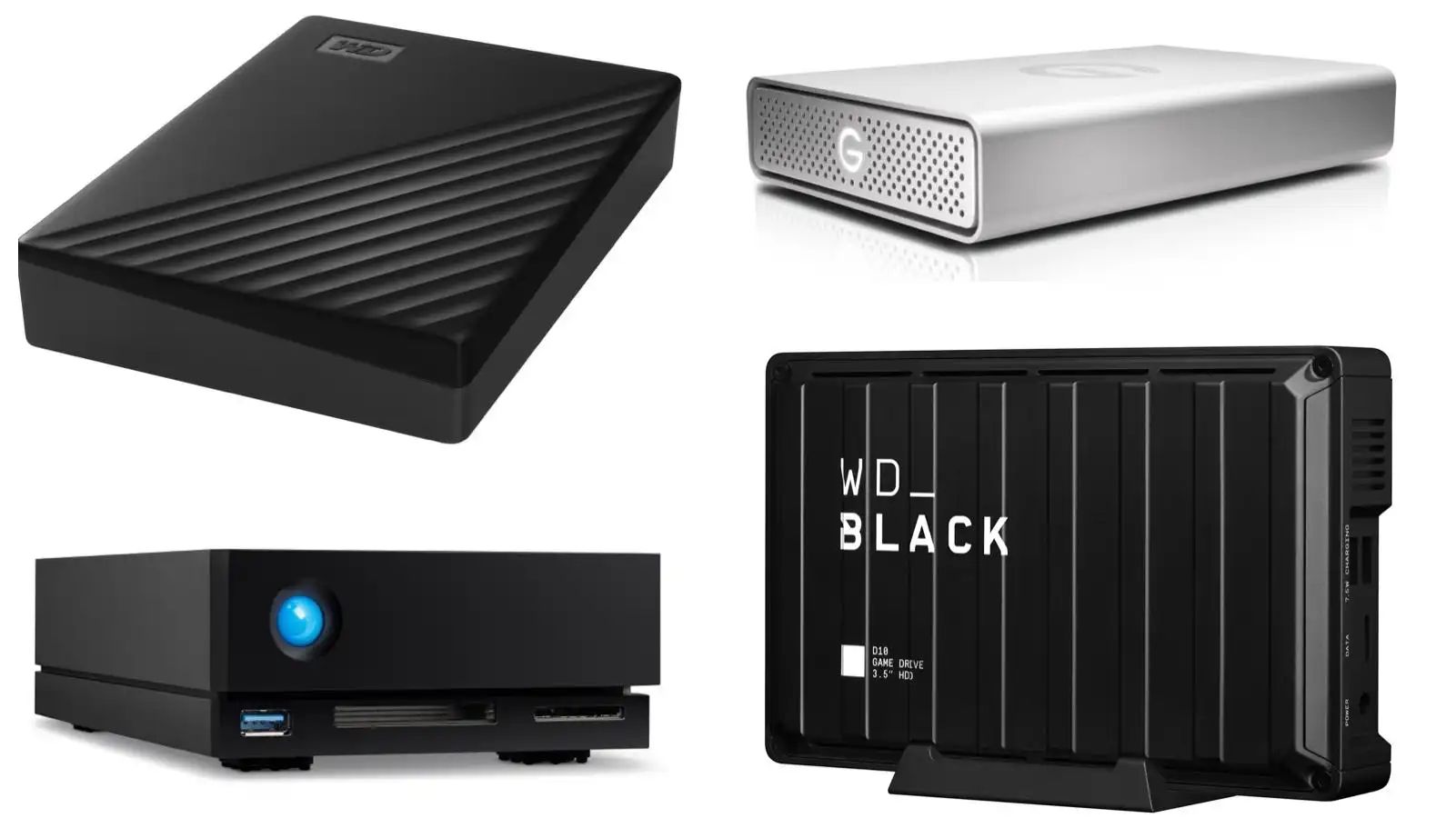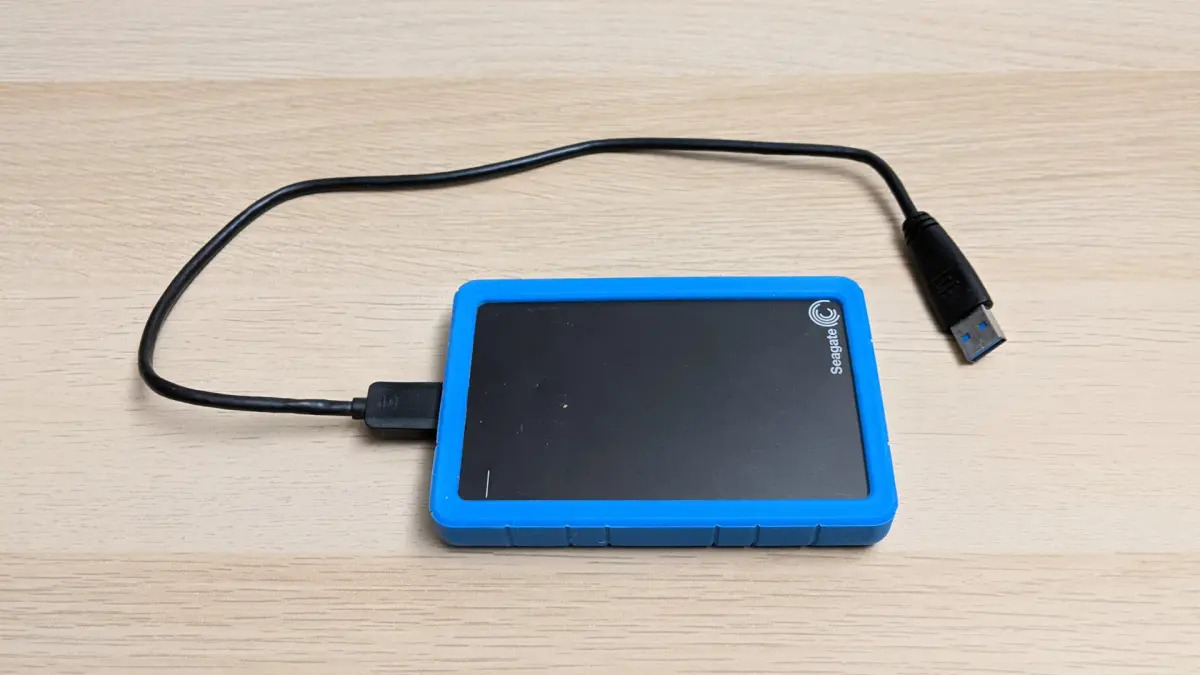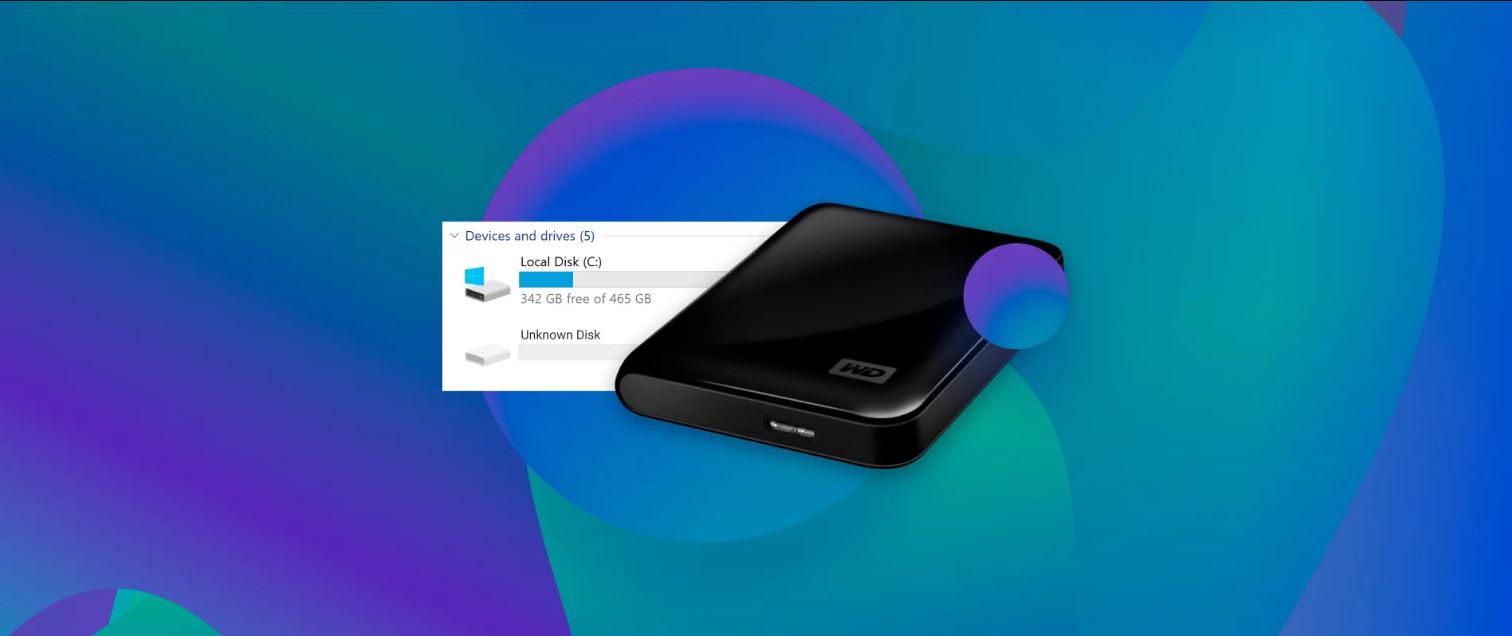Introduction
An external hard drive is a valuable tool for storing and backing up important files, whether you’re a professional, a student, or simply someone who wants to keep their data safe. However, with the increasing risk of unauthorized access to personal and sensitive information, it is crucial to take measures to protect the data stored on your external hard drive.
One of the most effective ways to safeguard your data is by encrypting your external hard drive. Encryption is the process of scrambling data in a way that can only be read with the correct decryption key. By encrypting your external hard drive, you add an extra layer of security, making it nearly impossible for unauthorized individuals to gain access to your files even if the drive falls into the wrong hands.
In this article, we will explore the importance of encrypting an external hard drive to protect your valuable data. We will also provide you with step-by-step instructions on how to encrypt your external hard drive on both Windows and Mac operating systems, as well as offer some best practices for encryption and troubleshooting common issues.
By the end of this article, you will have a comprehensive understanding of why encrypting your external hard drive is essential and the knowledge to implement encryption measures to keep your data safe and secure.
Why Encrypt an External Hard Drive?
In today’s digital age, data privacy and security have become paramount. Encrypting an external hard drive offers several key advantages that make it a crucial step for protecting your data:
- Data Confidentiality: Encryption ensures that only authorized individuals can access the data on your external hard drive. Even if someone gains physical possession of the drive, they won’t be able to read the encrypted data without the decryption key. This is especially important if your external hard drive contains sensitive information such as financial records, personal documents, or confidential work files.
- Theft and Loss Protection: External hard drives are portable, which means they can easily be lost or stolen. By encrypting your data, you can prevent unauthorized access and reduce the risk of compromising your information if your drive falls into the wrong hands. This provides peace of mind, knowing that your personal and sensitive data is secure, even in the event of loss or theft.
- Compliance Requirements: Many industries, such as healthcare and finance, have strict regulatory requirements for data privacy. Encrypting your external hard drive ensures that you adhere to these regulations and maintain the confidentiality of client or patient information. Failure to encrypt sensitive data can result in legal consequences and damage to your reputation.
- Data Backup Security: External hard drives are commonly used for backing up important files. By encrypting your backups, you add an extra layer of security to ensure that your data remains protected, even in the event of a breach or unauthorized access to your backup device.
- Data Integrity: Encryption not only protects your data from unauthorized access but also ensures its integrity. This means that any modifications or tampering attempts to the encrypted data will be detected, providing an additional safeguard against data manipulation or corruption.
Overall, encrypting your external hard drive is crucial for maintaining the privacy, security, and integrity of your data. It allows you to control who can access your information and ensures that your sensitive files remain confidential, even if your external hard drive is lost, stolen, or compromised. In the following sections, we will guide you through the process of encrypting your external hard drive on both Windows and Mac operating systems.
Choosing the Right External Hard Drive for Encryption
When it comes to choosing an external hard drive to encrypt, there are a few important factors to consider:
- Capacity: Determine how much storage space you require. Think about the types of files you will be storing on the drive and consider any future storage needs. It’s always a good idea to get more capacity than you currently need to accommodate future growth.
- Compatibility: Ensure that the external hard drive you choose is compatible with your operating system. Most drives are compatible with both Windows and Mac, but it’s essential to double-check for any specific compatibility requirements.
- Connectivity: External hard drives can use different types of connections, such as USB, Thunderbolt, or FireWire. Choose a drive that has the connectivity options that work best for your system. USB 3.0 or higher is recommended for faster data transfer speeds.
- Durability: Consider the durability of the external hard drive. If you plan to use it in rugged environments or for frequent travel, opt for a drive that is shock-resistant and designed to withstand physical impact.
- Security Features: Look for external hard drives that have built-in hardware encryption capabilities. These drives have dedicated encryption processors that offload the encryption process from your computer’s resources, resulting in faster and more efficient encryption.
- Price: Finally, consider your budget. External hard drives come in various price ranges, so choose one that fits your budget while still meeting your storage and encryption needs.
It’s also worth noting that you can choose to encrypt an existing external hard drive or purchase an already encrypted drive. However, if you plan to encrypt an existing drive, ensure that it is compatible with encryption software and backup any important data before the encryption process.
By carefully considering the above factors, you can choose the right external hard drive that aligns with your storage needs, security requirements, and budget. In the next sections, we will guide you through the process of encrypting an external hard drive on both Windows and Mac operating systems.
How to Encrypt an External Hard Drive on Windows
Encrypting an external hard drive on Windows is a straightforward process that can be accomplished using the built-in BitLocker encryption feature. Follow these steps to encrypt your external hard drive:
- Connect your external hard drive to your Windows computer using a USB or other compatible connection.
- Open the File Explorer by pressing the Windows key + E. Locate and right-click on your external hard drive.
- Select “Turn on BitLocker” from the context menu. If you don’t see this option, it may indicate that your version of Windows does not support BitLocker. In this case, you can use third-party encryption software like VeraCrypt.
- Choose how you want to unlock the drive. You can use a password, a smart card, or both. Select the appropriate option and click “Next”.
- Once you’ve chosen your unlocking method, you’ll need to choose where to save your BitLocker recovery key. This is a crucial step in case you forget your password or lose access to your unlocking method. Choose either to save it to your Microsoft account, a USB drive, or print the recovery key. Click “Next” when you’ve made your selection.
- On the next screen, choose how much of your drive you want to encrypt. Select “Encrypt entire drive” for maximum security. Click “Next”.
- Choose the encryption mode. “New encryption mode” is recommended for better security but may not be compatible with older versions of Windows. If compatibility is a concern, select “Compatible mode”. Click “Next”.
- Review the encryption settings and click “Start encrypting” to begin the encryption process. This may take some time depending on the size of your external hard drive.
- Once the encryption process is complete, you’ll see a message indicating that the drive is now encrypted. Your external hard drive is now protected with BitLocker encryption.
Remember to keep your BitLocker recovery key in a safe place or configure it with your Microsoft account to ensure you can regain access to your encrypted drive if needed.
By following these step-by-step instructions, you can successfully encrypt your external hard drive on Windows using BitLocker. In the next section, we will explore how to encrypt an external hard drive on Mac.
How to Encrypt an External Hard Drive on Mac
If you’re using a Mac computer, encrypting an external hard drive is a straightforward process using the built-in encryption feature called FileVault. Follow the steps below to encrypt your external hard drive on Mac:
- Connect your external hard drive to your Mac using a suitable cable.
- Open the Finder by clicking on the Finder icon in the dock or by pressing Command + Space and typing “Finder” in Spotlight.
- In the Finder, locate and click on the “Applications” folder in the sidebar.
- Within the Applications folder, find and open the “Utilities” folder.
- In the Utilities folder, locate and open “Disk Utility”.
- In the Disk Utility window, select your external hard drive from the list on the left-hand side.
- Click on the “Erase” tab at the top of the Disk Utility window.
- Choose a name for your encrypted drive and select the appropriate file format for your needs (usually “Mac OS Extended (Journaled)”).
- Under the “Scheme” dropdown, select “GUID Partition Map”.
- Click on the “Security Options” button.
- In the Security Options window, select the level of security you desire. “Most Secure” uses a longer encryption process, while “Fastest” is quicker but less secure. Choose the option that suits your needs and click “OK”.
- Click on “Erase” to start the encryption process. This may take some time depending on the size of your external hard drive and the security level you selected.
- Once the encryption process is complete, your external hard drive will be encrypted with FileVault.
- When you reconnect your encrypted external hard drive to your Mac, you will be prompted to enter the encryption password that you set during the encryption process.
Make sure to remember your encryption password or securely store it in a password manager. Losing the encryption password may result in permanent data loss.
By following these steps, you can easily encrypt your external hard drive on a Mac using the built-in FileVault encryption feature. Encrypting your external hard drive provides an additional layer of security for your data. In the next section, we will discuss some best practices for encrypting an external hard drive.
Best Practices for Encrypting an External Hard Drive
Encrypting an external hard drive is an essential step in protecting your sensitive data. To ensure the effectiveness of your encryption process, consider these best practices:
- Choose Strong Passwords: When encrypting your external hard drive, make sure to choose a strong and unique password. Avoid using common words, personal information, or easily guessable patterns. Include a mix of uppercase and lowercase letters, numbers, and special characters to create a robust password.
- Backup Your Encryption Keys: Keep a copy of your encryption keys or recovery keys in a secure location. This will help you regain access to your encrypted data in case you forget your password or lose access to your unlocking method.
- Regularly Update Encryption Software: Keep your encryption software up to date to ensure you have the latest security enhancements and bug fixes. Check for software updates regularly and install them promptly.
- Be Mindful of Physical Security: While encryption provides digital security, physical security is also crucial. Keep your encrypted external hard drive in a safe place when not in use and minimize the risk of loss, theft, or damage.
- Encrypt the Entire Drive: For maximum security, choose to encrypt the entire drive instead of selected files or folders. This protects all data stored on the external hard drive, leaving no room for potential unencrypted data leaks.
- Regularly Back Up Your Encrypted Drive: As with any data storage device, it’s important to regularly back up your encrypted external hard drive. This ensures that you have a copy of your data in case of physical damage, loss, or other unforeseen circumstances.
- Use Trusted Encryption Software: If the built-in encryption features on your operating system are not sufficient, consider using trusted third-party encryption software. Research and choose a reputable software solution that suits your specific needs.
- Be Aware of Encryption Performance Impact: Encrypting and decrypting data can have a slight impact on the performance of the external hard drive. While modern encryption methods have minimized this impact, be aware that there might be a small decrease in read and write speeds.
By following these best practices, you can enhance the security of your encrypted external hard drive and ensure the protection of your sensitive data. Remember that encryption is just one aspect of data security, and it’s important to implement additional measures such as strong passwords, antivirus software, and regular system updates to maintain a comprehensive security posture.
Troubleshooting Common Encryption Issues
While encrypting an external hard drive is a reliable way to protect your data, sometimes you may encounter issues during the encryption process or while accessing your encrypted drive. Here are some common encryption issues and troubleshooting tips:
- Forgotten Password: If you forget the password to your encrypted external hard drive, it can be challenging to regain access to your data. Make sure to store your password or recovery key in a safe and secure location. If you’ve forgotten your password and don’t have a recovery key, the data on the encrypted drive may become permanently inaccessible.
- Compatibility Issues: Encryption methods may not always be compatible across different operating systems or software. If you are encrypting a drive on one system and plan to access it on a different system, ensure that both systems support the encryption method being used.
- Encryption Time: The encryption process can take a significant amount of time, especially for larger drives with a lot of data. Be patient during the encryption process and avoid interrupting it. Interrupting the encryption process may result in data corruption or loss.
- Unresponsive Drive: If your encrypted external hard drive becomes unresponsive or fails to mount, there may be an issue with the encryption process or the drive itself. Try reconnecting the drive, restarting your computer, or using a different USB port. If the issue persists, seek professional assistance.
- Data Corruption: In rare cases, the encryption process may encounter errors or result in data corruption. Before encrypting your external hard drive, make sure to back up any important files to avoid data loss. Regularly back up your encrypted drive to ensure you have a recent copy of your data in case of any issues.
- Hardware Failure: If your encrypted external hard drive experiences hardware failure, it can be challenging to recover your data. Regularly scan the drive for any signs of impending failure, such as strange noises, slow performance, or unrecognized drive errors. If you suspect hardware failure, consult a professional data recovery service.
If you encounter any issues during the encryption process or while accessing your encrypted external hard drive, it’s always advisable to seek assistance from experienced professionals or consult the documentation and support resources provided by the encryption software or drive manufacturer.
By staying informed about these common encryption issues and implementing troubleshooting strategies, you can address and resolve potential challenges, ensuring the security and accessibility of your encrypted external hard drive and data.
Conclusion
Encrypting an external hard drive is a crucial step in protecting your sensitive data from unauthorized access, loss, or theft. Whether you’re using a Windows computer or a Mac, there are built-in encryption features that make the process relatively straightforward. By following the step-by-step instructions provided in this article, you can easily encrypt your external hard drive and add an extra layer of security to your valuable data.
Remember to choose a strong password, back up your encryption keys or recovery keys, and keep your encrypted drive in a secure location. Regularly update your encryption software and be mindful of physical security to minimize the risk of data breaches.
While encryption provides a significant level of protection, it’s important to implement additional security measures such as using strong passwords, keeping your system up to date, and using trusted antivirus software to create a comprehensive security strategy.
By following the best practices outlined in this article and being aware of common encryption issues, you will be better equipped to protect your data and maintain the confidentiality, integrity, and availability of your information.
Encrypting your external hard drive is a proactive step towards safeguarding your personal and sensitive data. Take the time to implement encryption now and enjoy the peace of mind knowing that your information is protected from prying eyes.







